Find And Catch Cold Water Bass
Follow these guide tips and catch bass all winter long.

The warm breezes and long sunny days of summer are a distant memory, replaced by the short days and cold nights of winter. For me, cabin fever sets in firmly by January, leaving me torn between spending another day organizing my tackle or pulling the cover off my boat and squaring off against the cold winter winds. Many fishermen in the Northeast face the same dilemma, and in the face of notoriously tough fishing conditions, hang up their rods and reels, winterize their boats, and resign themselves to the fact that bass fishing is over until spring—but it doesn’t have to be. If your local honey hole isn’t covered in ice and you are prepared to face the chilly wintertime air, the Northeast can still provide exciting, cold water bass fishing. The key is knowing where to look, what to use, and how to use it.
(Note: On The Water is reader-supported. When you buy through links on our site, we may earn an affiliate commission.)
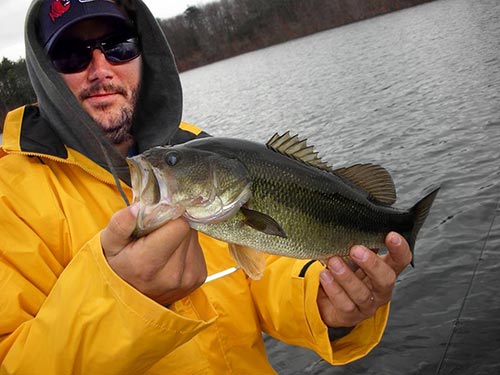
The biggest challenge for many anglers is changing their summer fishing tactics to winter tactics. When water temperatures dip into the 30s, slowing down your approach and downsizing your baits are the keys to catching bass. Bass are cold-blooded, meaning their body temperature is the same as the surrounding water. As the water temperature drops, their metabolism slows dramatically and their energy level is greatly reduced. The bass’ need for food decreases, and though they feed less, they will still feed.

When looking for winter bass, I focus on finding cover or structure in deeper water. Electronics will allow you to cover more water and search for these fish-holding structures as well as locate schools of fish. If you don’t have electronics, basic pond maps and cell phone apps like Navionics can be very helpful.
Largemouth will seek the warmest, most stable water they can find, and that usually means deeper water, so for many anglers this is the first daunting challenge of winter fishing. Many of us are used to beating the banks and fishing shallow cover and structure for bass in the warmer months, but we have lees experience searching open water and probing the depths with deep-diving baits or vertical-jigging presentations.
On deeper lakes or ponds (which take longer to freeze), largemouth as well as their prey bunch up tightly around vertical structure and offshore structure like humps, and rock piles. The commonly accepted theory is that bass tend to key in on these areas in the coldwater months because they can move greater distances more easily and expend less energy to change their depth. Any remaining weeds can also be a great area to target. Small baitfish and panfish will concentrate in these areas, and the bass will follow. If the weeds are near deep water, then you’ve found a winter hotspot.
Once I’ve located good structure or schools of bass or baitfish, the next thing to do is tie on my favorite coldwater baits. Below are my go-to presentations for when the water temperature drops below 40 degrees. Give them a try this winter, and you just might heat things up.
Grub
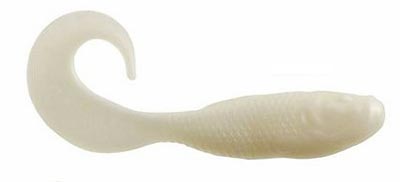
A curly-tail grub can be one of the most effective bass lures for warm or cold water, yet for some reason many bass anglers never use them. Grubs can catch bass both shallow and deep, and in clear or murky water. When the water is very cold, a 3- to 4-inch curly-tail grub on a ¼-ounce jighead is one of the simplest and most effective presentations for large and smallmouth bass. Cast to the shallow edge of a drop-off and let the grub sink alongside it, raising the rod tip as the bait reaches the bottom. Many of the strikes will come as the grub is falling, so be ready.
Suspending Jerkbait

I like fishing suspending jerkbaits in the winter because they allow you to cover a lot of water and they draw strikes even when they’re not moving. Jerkbaits can match the lethargy of coldwater bass while keeping your bait in the strike zone. Fishing this bait is largely the same as during other times of year, but the biggest difference is the length of the pause between snaps of the rod. I see many anglers fishing these baits too aggressively throughout the winter. Cast your bait beyond your target, crank it down to the depth you are targeting and then give a snap of your rod tip on slack line. A good rule of thumb is the colder the water, the longer the pause. You will have to experiment with the length, but I have paused a jerkbait for as long as 60 seconds in order to draw strikes.
Soft-Plastic Worm
A soft-plastic worm worked very slowly can be one of the most effective winter bass-fishing techniques. These baits allow for a very slow, finesse presentation. When there are windy conditions, they can be matched with a variety of weights to create some very effective finesse presentations. It also makes it easier to stay connected to your bait, which can be very tough in windy conditions. Wacky rigging, Carolina rigging or drop-shotting the worm can very effective techniques as well.
Blade Bait
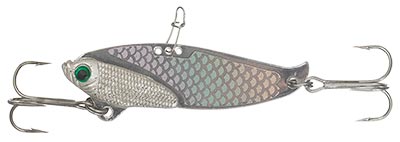
It took me a while to get comfortable with this bait, but I have come to count on the blade bait for bites from largemouths and smallmouths in extreme coldwater conditions. Similar to the grub, the blade bait is an often overlooked option for anglers.
Many anglers overlook blade baits because of their weight and aggressive vibration, yet these lures are so effective for the very reasons many overlook them. They are versatile because they can be fished like a crankbait or dropped into a deep hole and jigged vertically. You can keep them in the strike zone, lift and drop your rod tip, and they will flutter as they fall.
Jig and Trailer
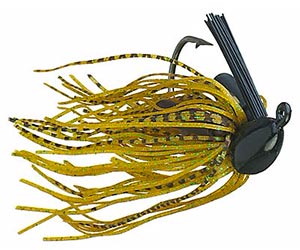
The “jig and pig” can provide some big bites in winter. A light jig with a trailer is a good choice in cold water because you can fish it on lighter line. Hop or swim it slowly around the rocks and along drops to probe for bites. The lighter weight of the jig should keep it from falling between cracks in the rocks and getting hung up.
Related Content
7 Essential Lures for Winter Bass Fishing
Two Must-Have Cold Water Rigs for Largemouth Bass
13 on “Find And Catch Cold Water Bass”
-
Roger Kummerer Thank you for the info!
-
jerry griffin I have been using lazor blades and jerkbaits for the winter this year. I purchased some suspended jerkbaits but they don’t go down fast enough and so I am not in the strike zone, Even when I count down 1000 one 1000 two etc, I am not deep enough to reach the bass. If someone can help me out I would certainly appreciate it, Thanks.
-
Charles George jr cast your jerkbait out as far as you can and let it settle for aten count . Give acouple of hard jerks to get it down. count ot ten slowly,give it acouple of slight jerks ,then pause again for a count of 8- 10 seconds. repeat. It is tedious to say the least but it has brought me luck.
-
BFLChamp Great question go for an A rig or pumping a ratLtrap. They tend to allow you to try different retrieves different depths and figure out what the fish tell you. 2 bites is a pattern. Good luck this season
-
-
-
jerrygriffin I have fished for largemouth bass so far this winter.I have used spinnerbaits, jerkbaits, jiga dpig.swimbaits,crank baits, I have not had my first strike. I fish out of a kayak set up for fishing. I have a fishfinderetc, I love fishing in the winter. I live in Noth Carolina in the piedmont area. a
-
Lance Greene Hey Jerry Griffin. I also live in NC, I am on the Bass Fishing team of Western Carolina University. We have several lakes to choose from and each one is different. Fontana is all slab rock, where as Chatuge is clay. Since you have a depth finder, key in on deep creek channels and river channels. You can use a blade bait, or a 10XD, a dropshot can be deadly as well. Another option is to go to the main lake, find a point that looks like a good place for fish to travel to. Drag a tube, jig, shaky head pretty deep. Once you key in on those fish you can start making that pattern and just destroy the competition. Good luck buddy, come to Fontana sometime!
-
Jon B Use fake worms and a small strike king jig
-
BFLCHAMP Remember everything needs to be toned down size of bait and retrieves. I often twitch a jerkbait on slack line and wait up to a minute before continuing retrieve. They are incredibly slow this time of year ripping a trap or jerking a jerkbait like you’re having a siezure simply and usually doesn’t work there are exceptions.
-
-
Christian Hello. I have a question. About 4 weeks ago, the water has unfrozen here in Plymouth Indiana. The water temp is still below 50 degrees. I need to know what to use today. The temps from today to friday are going to be 60 degrees. I know last year, in my backyard, I can just walk out and fish where 6 lakes connect together. In february, last year, I caught a 7 lb, 21 inch bass. On a spin off jerk bait. I have no clue what to use. Anything I use, doesn’t work.
-
BFLCHAMP A lot of times fish focus in on different prey items in different seasons sometimes they will take the same Baits but at different retrieves don’t beat the banks find points and structure that is close to deep water fish will be moving up in those conditions. At the warmest part of the day then fish shallower but don’t beat the banks.
-
-
Jon B Try use a fake crawfish Texas rig it
-
Jay I fish lake raystown in pa that is deep and has a lot of sheer drop offs into 60 feet of water or deeper lots of bait fish but I cant get a bite any tips thank you and many more wet lines to come
-
Brian Boyd I’m fishing a spring fed pond in the NC mountains. Depth around 20’ . What would a good set up for bass I the winter?
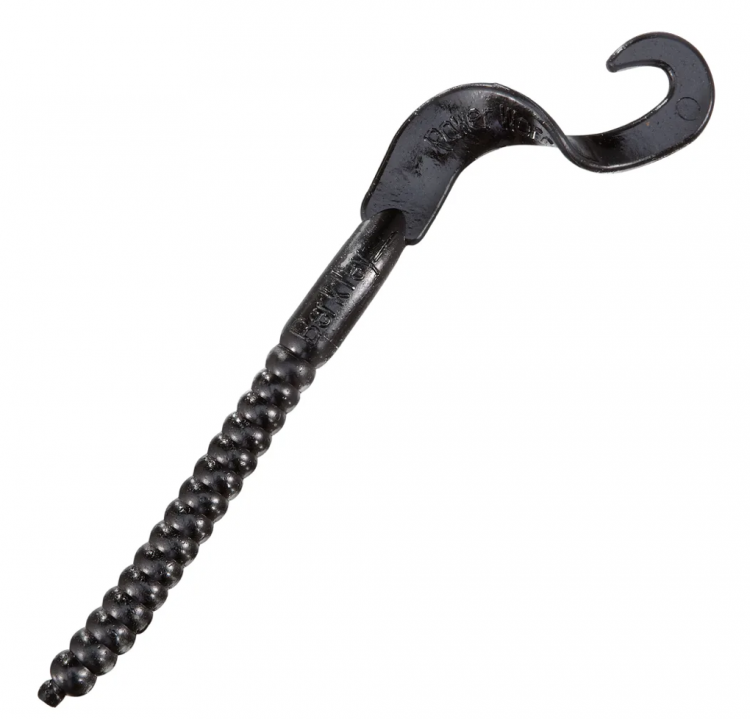
Leave a Reply